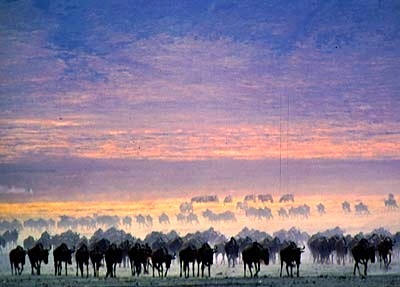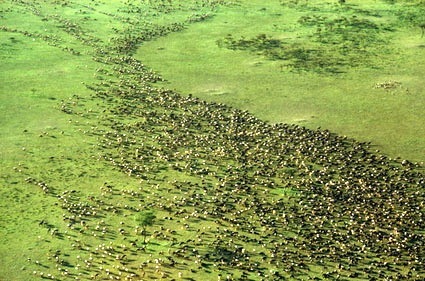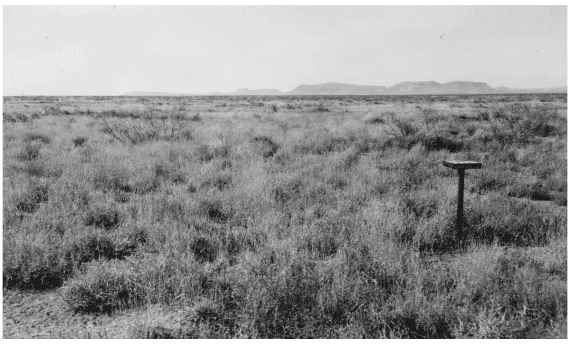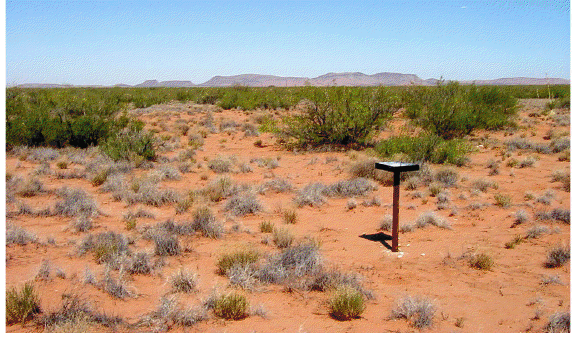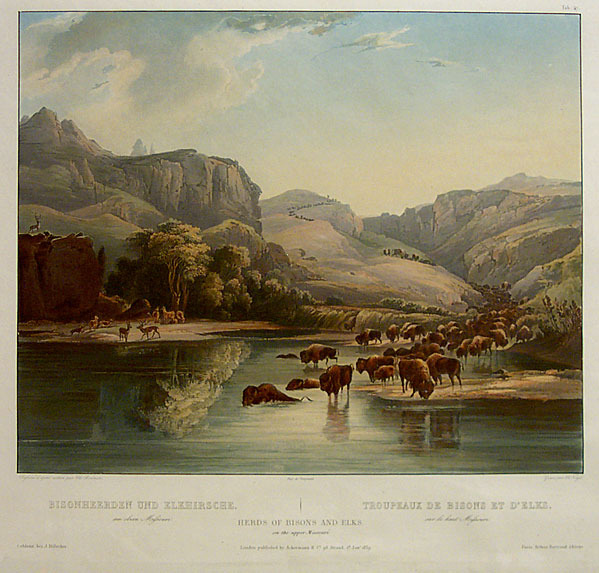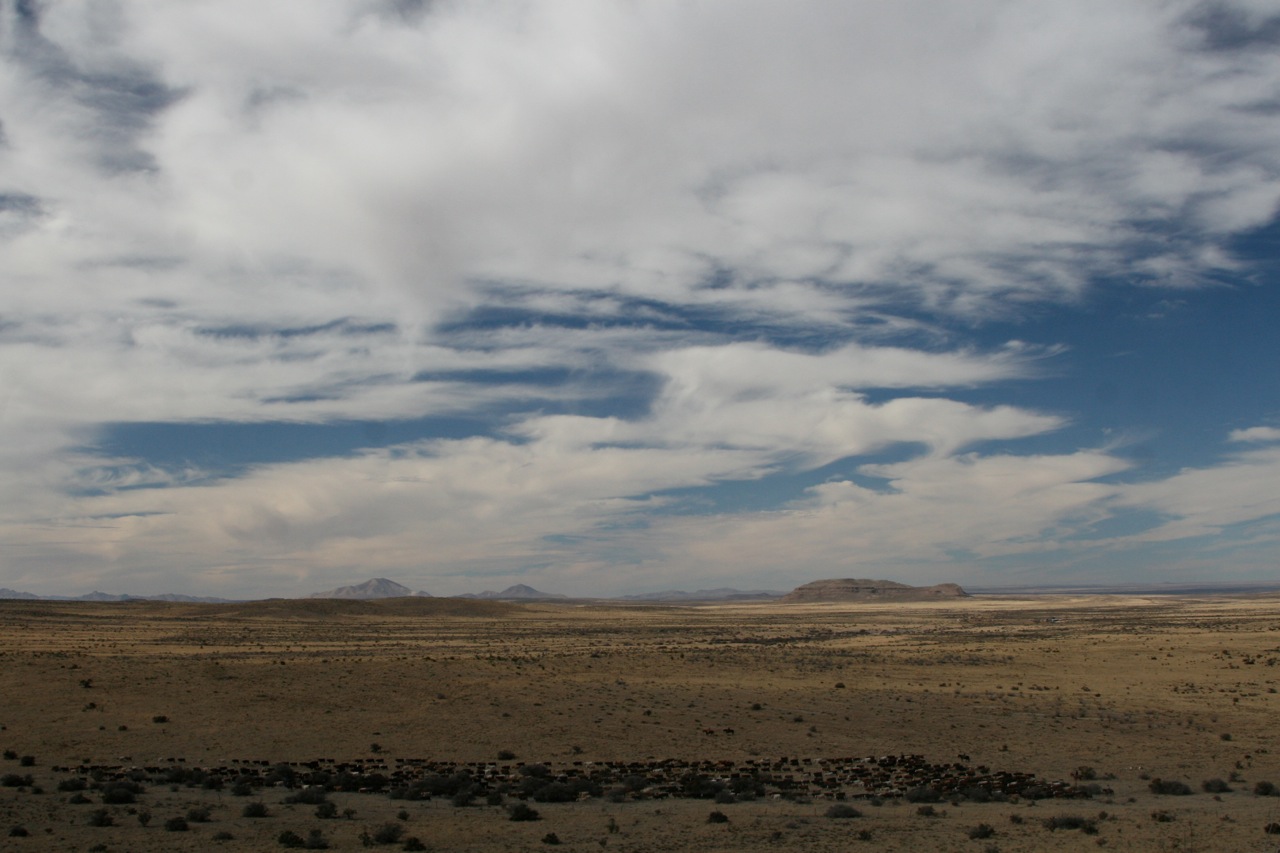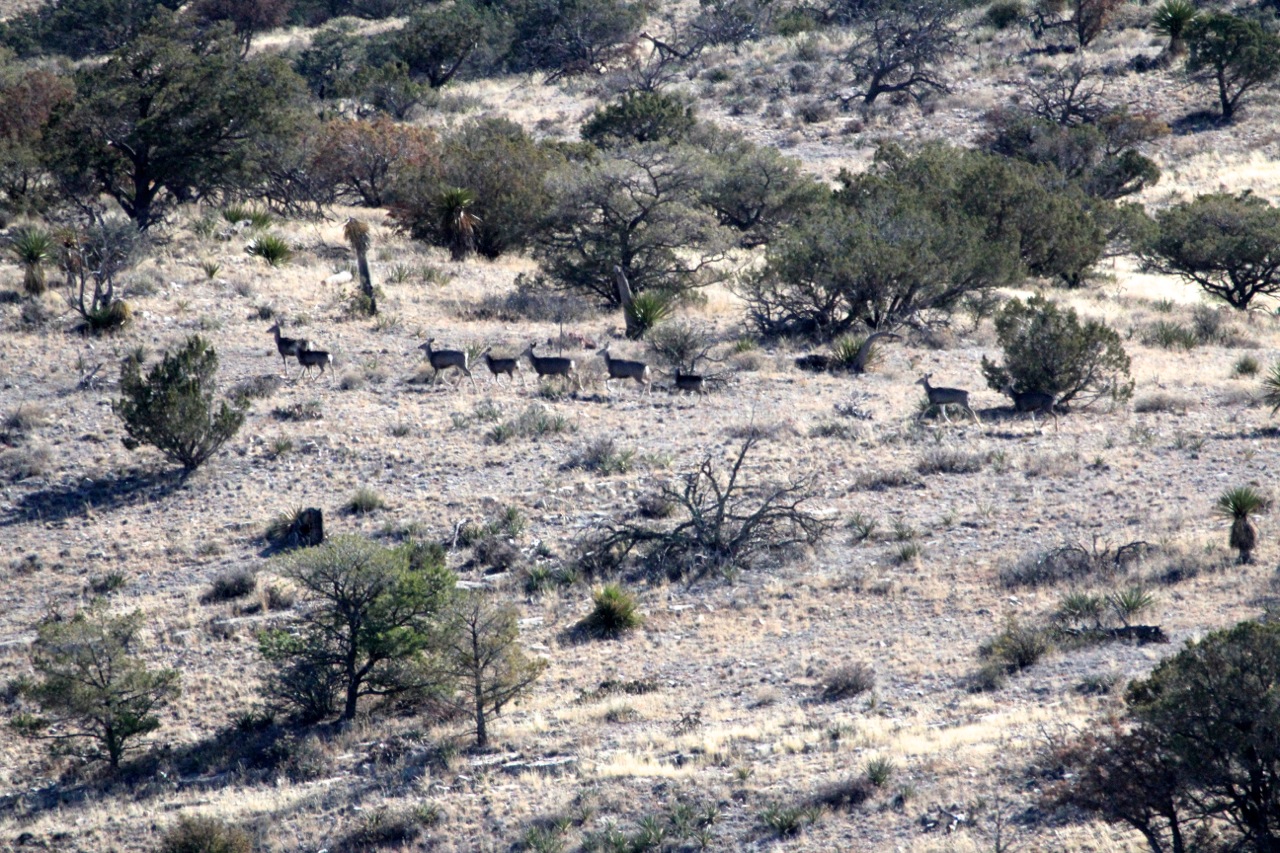New Mule Deer Research in the Chihuahuan Desert

This post contains a recently-published report on mule deer research in the Chihuahuan Desert. It was conducted by the Borderland Research Institute for Natural Resource Management (BRI).
BRI is part of Sul Ross State University in Alpine. West Texas needs BRI, specifically dedicated to our regional wildlife and habitat for far-West Texas.BRI has an outstanding board of directors and is headed by Dr. Louis Harveson.
A Report on Mule Deer Research in the Chihuahuan Desert
This report is full of useful information and new insights. It discusses:
- The irregular 35-year decline of this animal across far-West Texas.
- Difficulties with mule deer population survey techniques.
- Dangers of Spike 20p to mule deer.
- That deer range across far-greater areas than previously believed.
- Questions about supplemental feeding.
- Better ways to transplant deer.
In my opinion every factual statement contained is correct: Several of these have been the subject of articles on this site.
Its weakness, which is the topic of this piece, lies in how the “dots” of these various facts are connected to develop advice for management of desert mule deer and habitat. This reflects some fundamental misunderstandings of how desert habitats “tick,” physiologically-speaking.
As in the practice of medicine, range and wildlife prescriptions are based on diagnosis in which symptoms are identified and then analyzed. Conclusions can be no more valid than the understandings through which the data was interpreted. No matter how careful the process, if the assumptions that organized the data are wrong, so is the conclusion.
This report contains a central management prescription which harms range and wildlife. It is found in the following statement:
“One way to curtail the effects of drought is to insure that valuable forb and browse resources are available for your deer through proper habitat management. This may mean conducting habitat improvements to promote forbs and quality browse or minimizing competition with livestock and other wildlife. Conservative stocking rates can also insure adequate fawn cover which is critical for fawn survival (the emphasis was added by me).
The term “conservative stocking rates” is a reference to the traditional ranching practice of “low-density set-stocking,” that is, fencing small numbers of animals in one place all the time. Set-stocking at any animal density, high or low, will destroy habitat for mule deer.
The fundamental weakness in our habitat and wildlife practices is the failure to recognize that destocking the ranges of domestic animals, plus the reductions/eradications of wild animals to reduce “competition” ignores that desert animals and plants need each other, this being the result of millions of years of co-evolution between plants and animals: This ancient physical interdependance between grass and grazers is why removing grazers kills grasslands.
“The premise of holistic grazing is simple: Plants need animals as much as animals need plants. Originally on our desert grasslands, animal diversity in large numbers was the norm not the exception; it was the combination of very-high animal numbers and the grazing timing of those large mixed herds that was so beneficial. Short grazing periods followed by very long periods of recovery was Nature’s way to protect plants from over utilization.”
Until we get this basic point right the conclusions drawn from the wealth of information contained in reports like this will continue to lead to practices that harm mule deer, as well as all wildlife and habitat.
Low-density set-stocking guarantees over-grazing of some plants and over-resting of other plants. Complete destocking over-rests all plants. Both practices cause desertification.
“These photos were taken on the Jornada Experimental Range: mule deer country about 120-miles from Circle Ranch. Federal managers destocked this range over 60-years ago in order to restore it. Look at the shocking loss of grass and increase in brush! Imagine how this land will look in another 100-years. Something like this can be seen most everywhere across the desert Southwest. Because the decline happens so slowly it can go unnoticed day-to-day. It is usually blamed on over-grazing. In the peer-reviewed paper in which these photos were published, the cause was unidentified ‘processes’. Over-rest is not even considered.“
Here is an example of how the same single set of undisputed facts can lead to two different outcomes as we manage mule deer, wildlife, and habitats:
- We accept what the Land-Grant Colleges tell us: Land must be protected from large numbers of animals. This belief is shared by almost every agency, university and non-profit, and is implicit in the paper we are discussing. In this view the correct way to protect mule deer is to remove all cattle, or to set-stock cattle at low numbers, in order to defend the plant community against over-utilization. When the plant community invariably degrades as it is doing across far-West Texas, continuing under the principle that animals are the source of this degradation, further destocking of domestic animals are carried out. Finally all the cows are gone but the land continues to degrade: Now it’s time to start removing wild animals because, obviously, “competition” among animals is the core problem. Because habitat is in continuous decline and able to support fewer-and-fewer animals, this has logic, but, what is really being ‘managed’ are extinctions.
- The holistic alternative view: Plants and animals are symbiotic. For millions of years, nomadic herds delivered infrequent but intense animal impact in the form of grazing, soil disturbance and fertilization by dung and urine. In this view, partial rest and total rest kill desert plants which having evolved with grazers require this impact. A degraded or dying plant community is treated, not with increased rest, but with increased animal impact managed however in a way that leaves 70% of the forage in place after the animals have passed so the deer have cover for fawns just as this paper recommends.
Opposite actions coming from identical observed facts, and objectives, because of different understandings of how plants and animals interact, that is, different assumptions, through which the same facts are interpreted!
“Herds of Bisons and Elks on the Upper Missouri – Karl Bodmer, around 1833. On state-managed lands across far-West Texas, the species pictured above are ‘lethally removed’ to ‘protect’ desert bighorn sheep, mule deer and plants. The belief that large, mixed herds of grazers like this one hurt our desert grasslands has led to practices which have done vast damage to Western ranges and mule deer. “
“At Circle Ranch we use cattle as a substitute for bison, and graze them in Nature’s image.”
Everybody should read this paper. Dr. Harveson, his co-authors and BRI are to be commended for the work that they are doing, as is Sul Ross: They deserve our support.
But also, land managers should educate themselves so they can make informed judgments about, and give feedback on, what the agencies and universities advise and do. The public should insist that the scientists it supports conduct themselves scientifically.
And after you have read this paper, if you want an “outside-of-the-box” look at these same facts, organized under a very different set of assumptions, a look that offers affordable, sustainable, common-sense practices that have proven to work in far-West Texas and around the world, CLICK HERE
Coming on January 15, 2013: Cows and (Desert Bighorn) Sheep.

